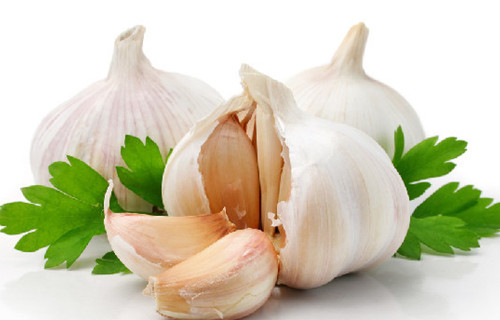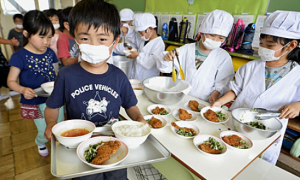导读:大蒜的价格又开始居高不下了,中国的蒜农和蒜商对这种“过山车”行情并不陌生。

The Dutch had Tulip mania in the 17th century, but the Chinese are grappling with a bubble in a bulb of a more pungent sort: garlic.
十七世纪,荷兰曾出现对郁金香的狂热炒作。如今,中国人正在应对一场涉及一种更辛辣植物球茎的泡沫:大蒜泡沫。
Prices have almost doubled in the past year to a record as poor weather and a surge of interest from speculative buyers has turbocharged the market. Given China accounts for more than 80 per cent of the world’s garlic exports, importers are struggling.
过去一年里,中国的大蒜价格几乎上涨了一倍,达到创纪录水平,恶劣的天气和投机性买家的兴趣大增令大蒜市场变得异常火爆。考虑到中国占全球大蒜出口的逾80%,大蒜进口国目前的处境很艰难。
“I’ve just come back from China and you can’t buy [any garlic] now,” said Joey Dean of Denimpex, a fruit and vegetable trader in Amsterdam, “Big speculators with big amounts of money have bought quite a lot of volume.”
阿姆斯特丹水果蔬菜交易商Denimpex的乔伊.迪安表示:“我刚从中国回来,如今已经买不到(任何大蒜)了。拥有大笔资金的大投机商已经买走了相当多数量的大蒜。”
There no garlic futures in China, but the renminbi price for the physical product started to rally in late 2015 after heavy rains, then snow, damaged the Chinese crop planted for the 2016 harvest. The jump in the price to a record drew in speculative buying, fanning the upward surge, according to analysts.
中国没有大蒜期货,不过,大蒜现货的人民币价格自2015年底开始上涨,因为多场大雨及随后下的雪对中国2016年收获季的大蒜收成产生了破坏性影响。分析师认为,大蒜价格跃升至创纪录水平吸引来了投机性买盘,对上涨行情起到了推波助澜的作用。
Garlic is predominantly grown in Shandong, an eastern province in China. Expectations of poor harvests have previously led to hoarding by locals, but money from Beijing and other large cities is now flowing into the market, according to Cui Xiaona, analyst at Sublime China Information Group, a commodity information service.
大蒜的主要种植区域是华东的山东省。卓创资讯分析师崔晓娜称,起初,是对收成不佳的预期导致了当地人囤积大蒜,但现在,来自北京及其他大城市的资金正流入大蒜市场。卓创是一家大宗商品资讯服务机构。
“This year many people knew that the garlic harvest was poor, so they thought, ‘well, I make money out of the price difference’. So many rushed to stock up on garlic,” she said.
她表示:“今年,许多人都知道大蒜收成不好,于是他们就想:‘我可以从价差中赚钱’。就这样,许多人争相囤积大蒜。”
Efforts by Chinese authorities to stabilise the country’s stock market by imposing curbs on equities trading last year has resulted money flowing instead into a wide range of commodities.
去年,中国政府曾展开多次努力,试图通过限制股票交易来稳定中国股市。此举导致资金转而流入一系列大宗商品市场。
Garlic growers and merchants are no strangers to a rollercoaster ride. In 2009 and 2010, prices soared after speculators bought up bulbs following smaller planted acreage and a belief garlic would ward off swine flu. Prices are now higher than those seen between 2009 and 2010, according to Mintec, the commodities data firm.
中国的蒜农和蒜商对这种“过山车”行情并不陌生。2009年和2010年,受种植面积缩减和所谓大蒜可预防猪流感的观点影响,投机者大举买入大蒜,导致蒜价飙升。大宗商品数据公司Mintec的数据显示,目前的蒜价比2009年至2010年间的水平还要高。
The lack of supply and high prices have led to a decline in Chinese exports, which are at a four-year low. In the first seven months of this year, fresh garlic exports fell 12 per cent to 895,000 tonnes.
供应短缺和高昂的价格已导致中国大蒜出口下滑。目前,中国的大蒜出口正处于四年低点。今年头七个月,鲜蒜出口下滑了12%,至89.5万吨。
The situation is even more acute in dried garlic, which is easier to store than fresh bulbs. Stricter environmental regulation has also meant that many processing factories have been taken out of commission, further reducing dried garlic supplies, according to Vinayak Narain, senior vice-president at agricultural trader Olam’s spices and vegetable ingredients business.
比鲜蒜更易储存的干蒜面临的形势更加严峻。农业交易商奥兰的香料及蔬菜配料业务高级副总裁维纳亚克.纳拉因称,更加严格的环保监管意味着,许多加工厂已被迫退出生产,干蒜的供应将进一步减少。
China accounts for almost 90 per cent of the world’s dried garlic exports that are mainly used in food manufacturing. The Chinese supply shortage has coincided with a shortfall in the crop in the US, another leading supplier.
中国干蒜出口占全球的近90%。干蒜主要用于食品加工。中国供应短缺的同时,另一主要供应国美国的供应也出现了短缺。
Traders expect prices to remain firm in the near term.
交易商预计,蒜价在近期内会保持坚挺。
“If the next harvest is normal you are going to see this rollercoaster come down by the end the second quarter next year, said Mr Narain.
纳拉因表示:“如果下一次收获产量正常,你会看到这列过山车在明年第二季度末前回落。”







